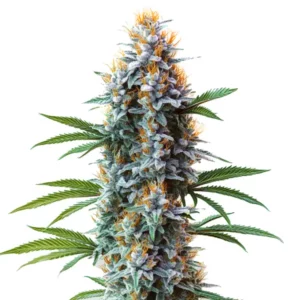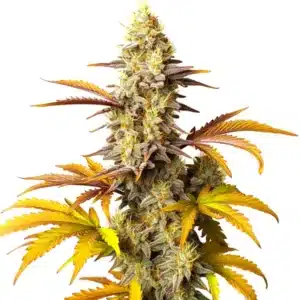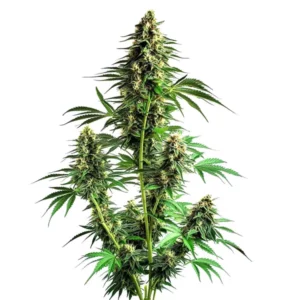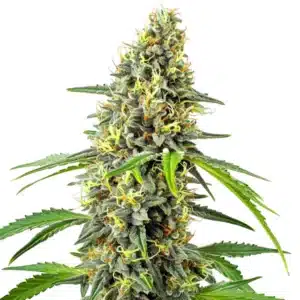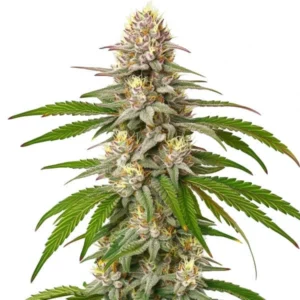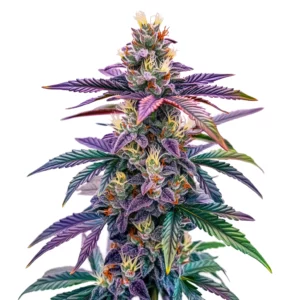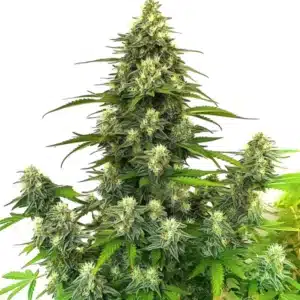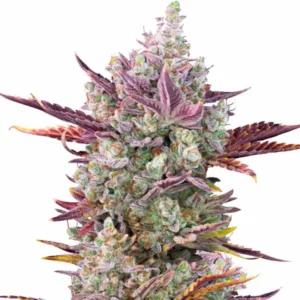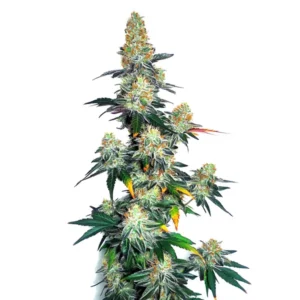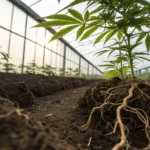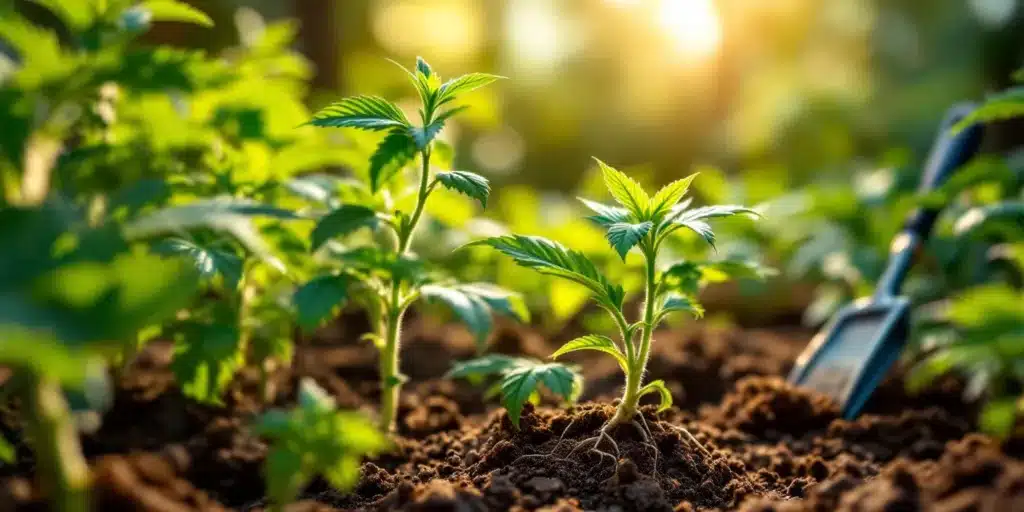
Best Cannabis Soil
When it comes to cultivating cannabis, the type of soil you choose can significantly impact the health and yield of your plants. Finding the right soil doesn’t have to be a complicated process, and with the right knowledge and guidance, you can create the perfect environment for your cannabis plants to thrive!
In this article, we’ll explore what characteristics make soil ideal for growing cannabis, various types of suitable soil, and best practices for soil preparation. Let’s dig in and discover how to nurture your plants like a pro!
Recommended Strains
Blue Cheese
|
|
THC | 16% - 20% (Medium) |
|
|
Type | Feminized |
|
|
Yield | High |
|
|
Phenotype | 80% Indica / 20% Sativa |
Blue Cheese Autoflower
|
|
THC | 14% - 16% (Medium) |
|
|
Type | Autoflowering |
|
|
Yield | Medium |
|
|
Phenotype | 80% Indica / 20% Sativa |
What Makes Soil Ideal for Cannabis?
The best cannabis soil provides both essential nutrients and optimal drainage. Cannabis plants thrive in soil that allows air and water to flow freely, avoiding compacted or overly damp conditions. Healthy soil is like a happy home for your plants where they can grow strong and robust!
A rich soil mix typically contains organic components that help foster a healthy root system. Ingredients like compost, peat moss, and perlite not only provide essential nutrients but also contribute to the overall structure of the soil. Think of these components as the building blocks for a thriving cannabis ecosystem.
Furthermore, it’s important to remember that the right soil can also provide a buffer against various challenges, such as environmental stressors or nutrient deficiencies. A well-prepared soil mix can create a balanced environment that leads to healthy plants and a successful harvest.
Each cannabis plant is unique, and the soil can greatly influence its development. Pay close attention to your mix and make adjustments based on your plants’ needs, and you’ll see amazing results!
Components of Quality Cannabis Soil
- Organic Matter: Compost and aged manure help deliver nutrients and improve soil structure.
- Texture: A balance of clay, silt, and sand is necessary to ensure good drainage and moisture retention.
- pH Levels: Keeping the pH between 6.0 and 7.0 is ideal for nutrient absorption.
- Drainage: Adding materials like perlite helps prevent waterlogging and promotes healthy root growth.
Having a suitable mix of these components will create a welcoming environment for cannabis plants. Well-prepared soil encourages strong roots, which support nutrient uptake and resilience against pests and diseases. Plus, a healthy soil mix can enhance the final flavor profile of your harvest!
Consider conducting regular tests of your soil’s quality to ensure it remains optimal for your plants. This proactive approach can lead to better yields and a smoother growing experience. Small adjustments can lead to significant improvements!
Promos & Deals
Types of Soil for Growing Cannabis
There are various soil types that can be utilized for cannabis cultivation, and the ultimate choice depends on your personal preferences and specific growing conditions. Whether you’re growing indoors or outdoors, selecting the appropriate soil will lay the foundation for your plants’ health.
Here are some popular soil types that many cultivators choose:
- Potting Soil: This ready-made option often contains added nutrients, making it user-friendly for beginners.
- Super Soil: A pre-mixed organic soil that is highly fertile and supports healthy growth, often requiring less supplementation.
- Coco Coir: Made from the fibrous husks of coconuts, it retains moisture well and promotes excellent air circulation around the roots.
Choosing between different soil types might feel overwhelming at first, but understanding the strengths of each can guide your decision-making. For example, potting soil is great for those who prefer convenience, while creating your own soil mix can give you full control over the nutrients your plants receive.
Additionally, consider how each type of soil fits within your overall growing strategy. If you’re experimenting with different cannabis strains, the choice of soil can also impact their performance. Keeping a detailed journal can help you track how different soils work for various strains.
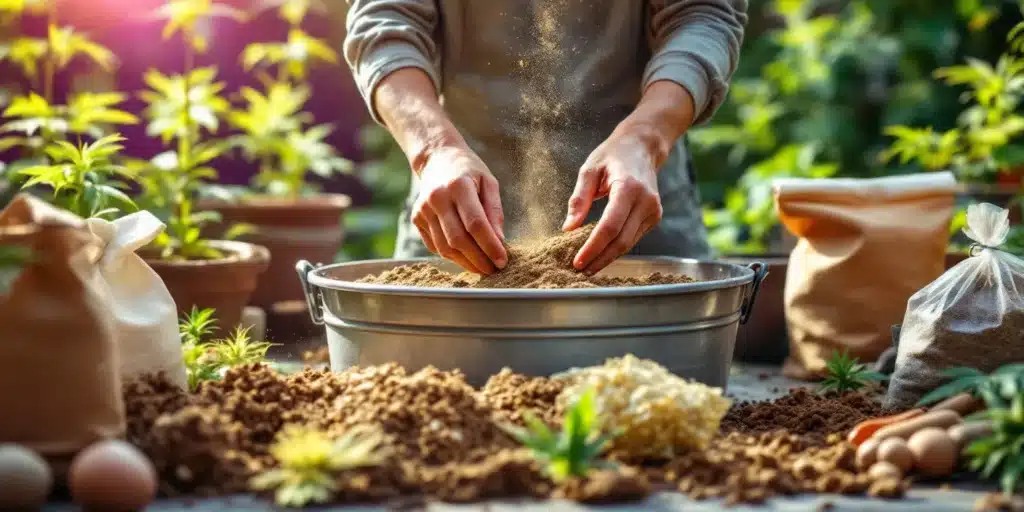
Potting Soil for Beginners
Potting soil is perhaps the simplest choice for those starting out in cannabis cultivation. This variety typically includes peat moss, perlite, and some type of fertilizer, creating a readily usable mix. The ease of use and availability at garden stores make it a go-to option for many first-time growers.
While potting soil might not have the same nutrient density as other types, it provides a solid base. Think of it as a blank canvas where you can start painting your growing journey. Pairing it with liquid fertilizers throughout the growing cycle helps replenish essential nutrients as your plants grow.
One great habit to develop as a new grower is to read the ingredient labels of your potting mix. Understanding what’s in your soil can empower you to make better decisions about supplementation and care. Remember, every little detail counts in nurturing healthy plants!
Don’t hesitate to seek advice from experienced growers or local gardening clubs. Their insights can provide valuable tips tailored to your local conditions, helping you maximize the potential of the potting soil you choose.
Preparing Your Own Cannabis Soil Mix
For those feeling adventurous, creating a custom soil mix offers greater control over every component, ultimately leading to healthier plants and potentially higher yields. Crafting your own mix can be immensely satisfying and allows you to tailor the ingredients to your specific needs!
A balanced soil mix for cannabis might include the following components:
- 40% Base Material: A mix of peat moss and coco coir creates a perfect foundation.
- 30% Aeration: Incorporating perlite or vermiculite promotes superior drainage.
- 20% Organic Matter: Using compost or worm castings provides a rich source of nutrients.
- 10% Fertilizer: A slow-release organic fertilizer enhances nutrient availability over time.
Mix these ingredients thoroughly to ensure a uniform texture, which is essential for supporting healthy root growth. Remember to allow the mixture to settle and “”mature”” before planting your seeds, as this can significantly affect nutrient availability and microbial life in the soil.
As you prepare your custom soil mix, don’t forget to gear up with tools like a shoveling spade, mixing tub, and pH testing kit. This preparation not only makes the process easier but helps you achieve the desired consistency and quality of soil.
Best Practices for Soil Preparation
After preparing your soil mix, it’s advisable to let it “”age”” for a few weeks. This aging process allows beneficial microbial life to establish, which is critical for nutrient cycling. Healthy microbes are nature’s team players; they break down organic matter and release nutrients that plants can absorb.
Testing the pH of your soil mix before planting is also crucial. Using a simple soil pH meter can help you ensure that it remains within the ideal range of 6.0 to 7.0. Adjusting the pH can involve adding lime to raise it or sulfur to lower it, depending on your soil’s needs.
Additionally, consider adding elements that can boost microbial activity, such as organic amendments or beneficial bacteria. This can help create an environment where plants are more resilient and better equipped to thrive. Remember, a little extra effort in soil preparation can yield fantastic results in your growing journey!
Finally, always keep track of your growing environment and make adjustments as needed. This ongoing process will refine your techniques, building your skills as a grower, and lead to successful and pleasant gardening experiences!
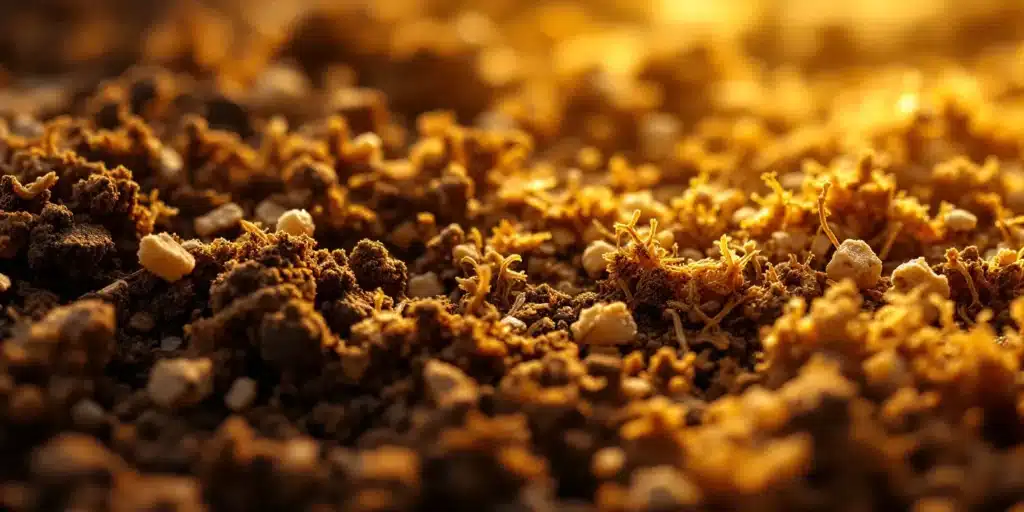
Effects of Soil Quality on Cannabis Growth
The quality of soil directly affects the growth and overall health of cannabis plants. High-quality soil encourages strong roots, which are essential for nutrient uptake and resilience against pests and diseases. A robust root system is like a solid foundation for a house, ensuring everything can grow strong and stable!
Good soil also promotes beneficial microbial activity. These little organisms play a key role in breaking down organic matter, which helps release nutrients for plant uptake. Moreover, a healthy soil ecosystem acts as a shield against harmful pathogens that may try to invade your plants. Healthy plants are happy plants!
Evaluating soil quality goes beyond just looking at its texture. Factors like nutrient levels, microbial activity, and overall pH will play into your plant’s performance. Engaging in regular assessments of your soil health can inform your maintenance practices, ultimately leading to higher yields.
Consider implementing a soil amendment schedule based on your observations and results over time. This datapoint-driven approach will help you refine your growing practices and provide tailored care to your cannabis plants!
Signs of Poor Soil Quality
Recognizing the signs of poor soil quality can help you intervene before it’s too late. Some indicators include:
- Stunted growth or yellowing leaves, signaling inadequate nutrients.
- Excess moisture, which may result in root rot.
- Poor drainage leading to waterlogged conditions, which could suffocate roots.
- High pest activity, often indicating compromised soil health.
If you notice any of these signs, it may be time to consider improving your soil mix or augmenting it with additional nutrients. Regular monitoring can help ensure a thriving garden. It’s critical to not only react to problems as they arise but also to adopt preventative measures to promote consistent soil health.
Engaging with online forums or social media groups dedicated to cannabis cultivation can also be invaluable. These communities often share tips, experiences, and troubleshooting advice that can help you overcome challenges related to soil quality.
Popular Cannabis Strains Recommended
While discussing soil choices, it’s worth mentioning some cannabis strains known for their adaptability to different growing conditions. These strains have gained a loyal following for their robustness and ability to thrive in various types of soil:
- Blue Dream: A hybrid strain that offers balanced effects and is often forgiving for first-time growers.
- Gorilla Glue: Known for its high yields and resilience against pests, making it suitable for different types of soils.
- Pineapple Express: A flavorful strain that thrives in well-draining soils, perfect for outdoor growing enthusiasts.
These strains have become popular not just for their consistent performance, but also for their unique flavors and aromas. Choosing the right strain can greatly enhance your growing experience, so take the time to research and select plants that match your growing style.
Moreover, consider experimenting with different strains across distinct growing conditions and soil types. Keeping notes on their performance will help you develop a deeper understanding of which strains flourish in specific environments, leading to continued success in your cultivation efforts!
Environmental Factors Affecting Soil Performance
The environment where cannabis is grown can greatly impact soil health and overall plant performance. External factors such as temperature, humidity, and light will play essential roles in how well your plants thrive.
For example, high temperatures can increase the evaporation of moisture from the soil, affecting nutrient availability. Conversely, if humidity levels are excessively high, it may lead to conditions conducive to root rot, particularly if the soil cannot drain properly. It’s important to cultivate an awareness of how these environmental factors interplay with your soil.
Implementing strategies to mitigate the impacts of these environmental conditions is key. Utilizing fans or climate control systems can help regulate temperature and humidity, creating a more stable growing environment.
Finally, consider investing in soil moisture meters. These handy devices can help you monitor soil conditions continuously, ensuring your plants receive just the right amount of water and nutrients to thrive.
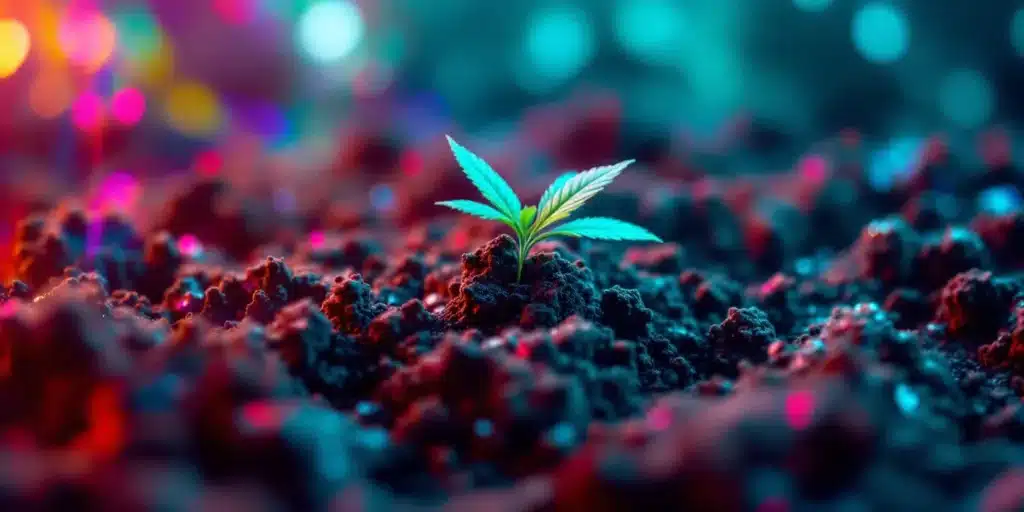
Managing Soil Conditions
Managing these environmental factors is essential for preserving optimal soil conditions. For instance, growing in a controlled environment like a greenhouse helps minimize the variability caused by external weather conditions, allowing for more consistent garden results.
Additionally, consider covering soil with mulch to retain moisture and prevent temperature fluctuations. This simple layer can help create a more stable environment for the roots and significantly improve overall plant health.
Don’t hesitate to reshuffle your garden layout if you find certain areas of your plot are affected more negatively by the environment than others. Some cannabis plants may thrive in slightly different conditions than their neighbors, and being flexible in your approach can yield exciting results.
Stay engaged with the community, experiment, and adapt your techniques based on ongoing observations. Remember, effective cannabis cultivation is as much about adaptability as it is about meticulous planning!
FAQs
What is the best pH level for cannabis soil?
The optimal pH level for cannabis soil typically falls between 6.0 and 7.0. Soil within this range allows for the best nutrient availability. Regularly testing your soil pH can help you maintain this balance and establish a thriving foundation for your plants!
How often should I water my cannabis plants?
Watering frequency can vary based on factors like plant size, pot size, and environmental conditions. A good rule of thumb is to water when the top inch of soil feels dry. Overwatering can lead to root rot, so it’s wiser to prioritize a drying-out period between waterings.
Is it necessary to buy organic soil for cannabis growing?
While organic soil is beneficial for its nutrient content and environmental sustainability, it’s not strictly necessary for successful cannabis cultivation. Many successful growers use non-organic soils, as long as they manage nutrients and pH levels appropriately.
Can I reuse soil from previous grows?
Reusing soil is definitely possible, but it typically requires proper treatment first. This process includes removing old roots, adding fresh nutrients, and possibly sterilizing the soil to eliminate any pest and disease issues.
What should I do if my plants are not growing well in my soil?
If your plants are not thriving, check the moisture level of the soil, pH, and nutrient content. Adjusting these factors can often result in improved plant health. If problems persist, it may be wise to change the soil or mix in additional amendments to enhance quality.
Remember that successful cannabis cultivation is a journey. With time, patience, and a willingness to learn, you can nurture your plants to their fullest potential!


